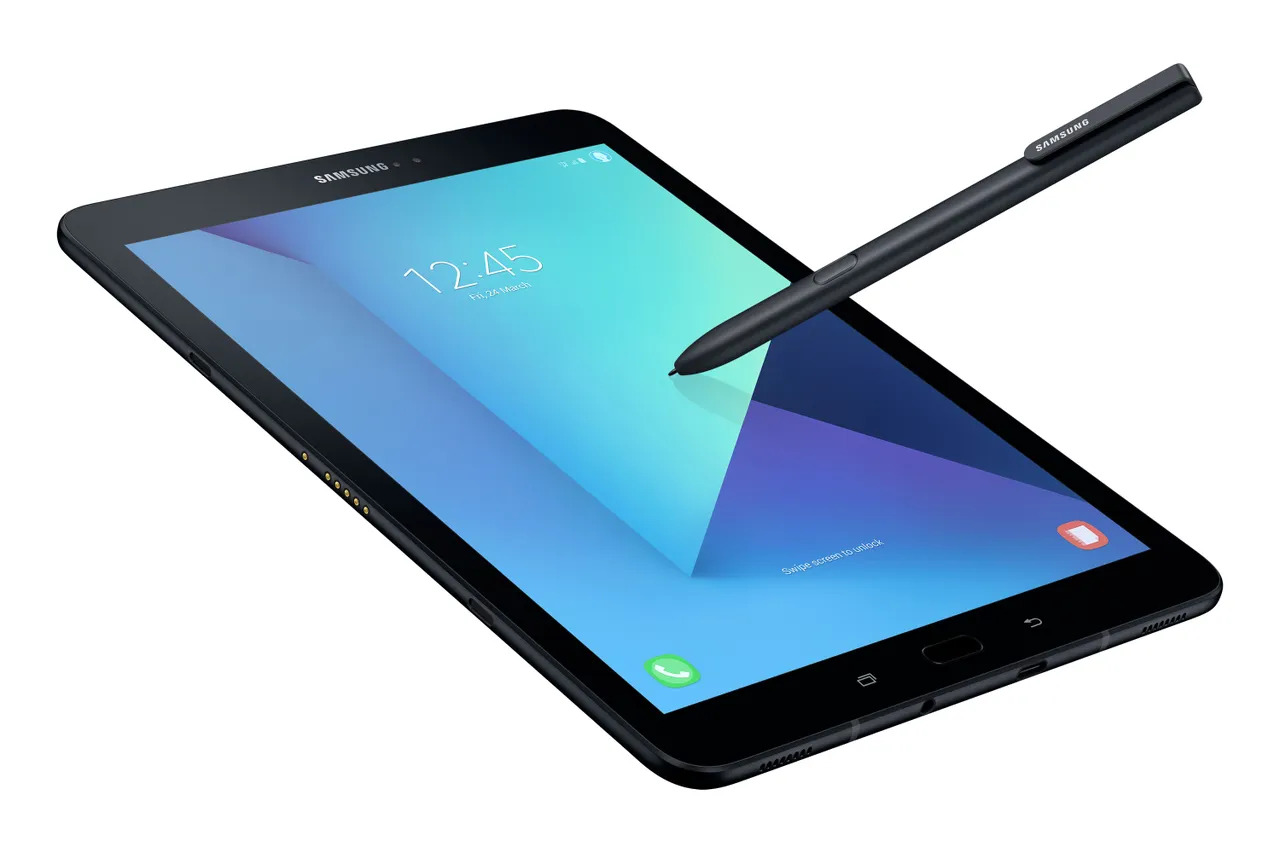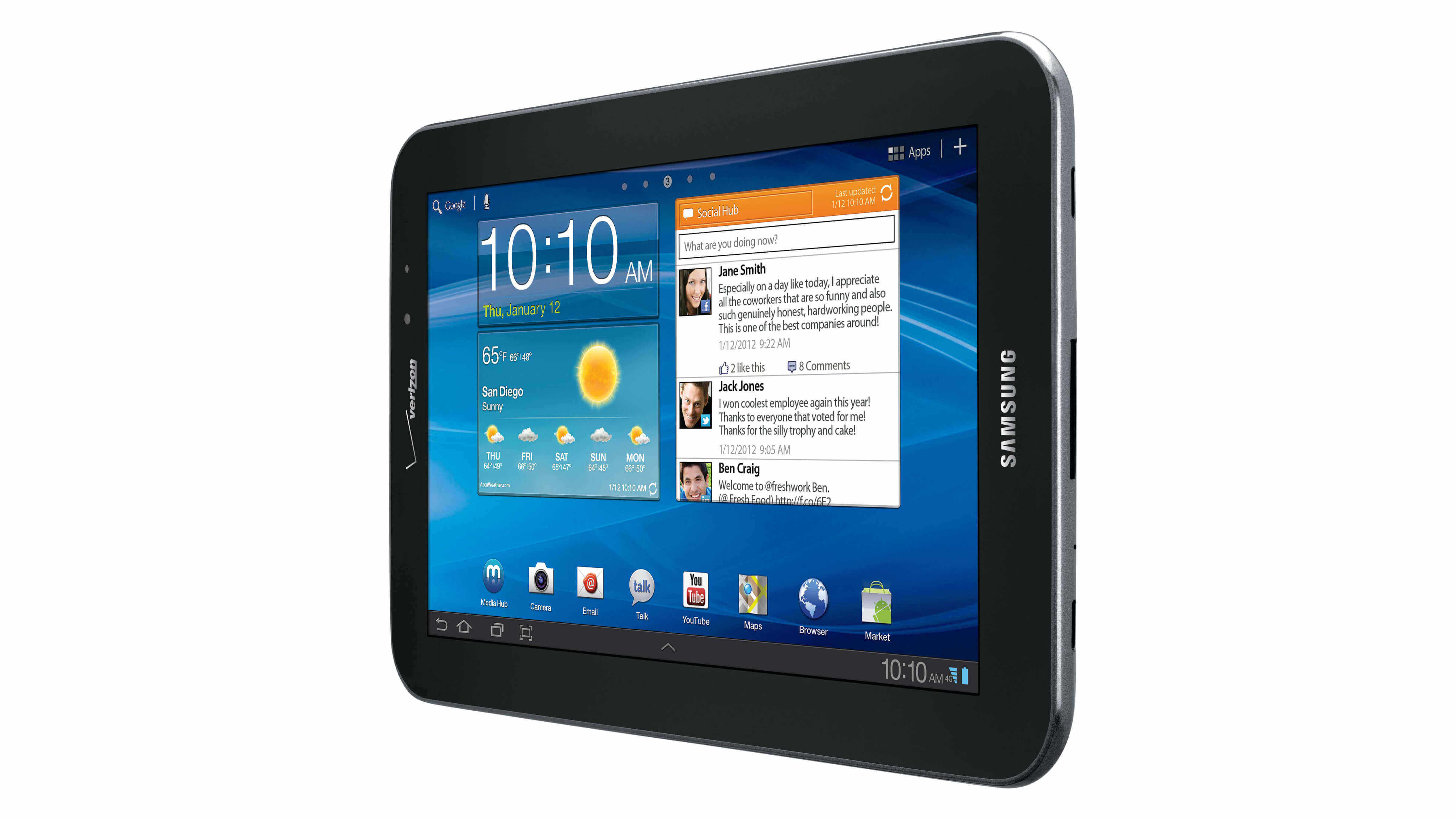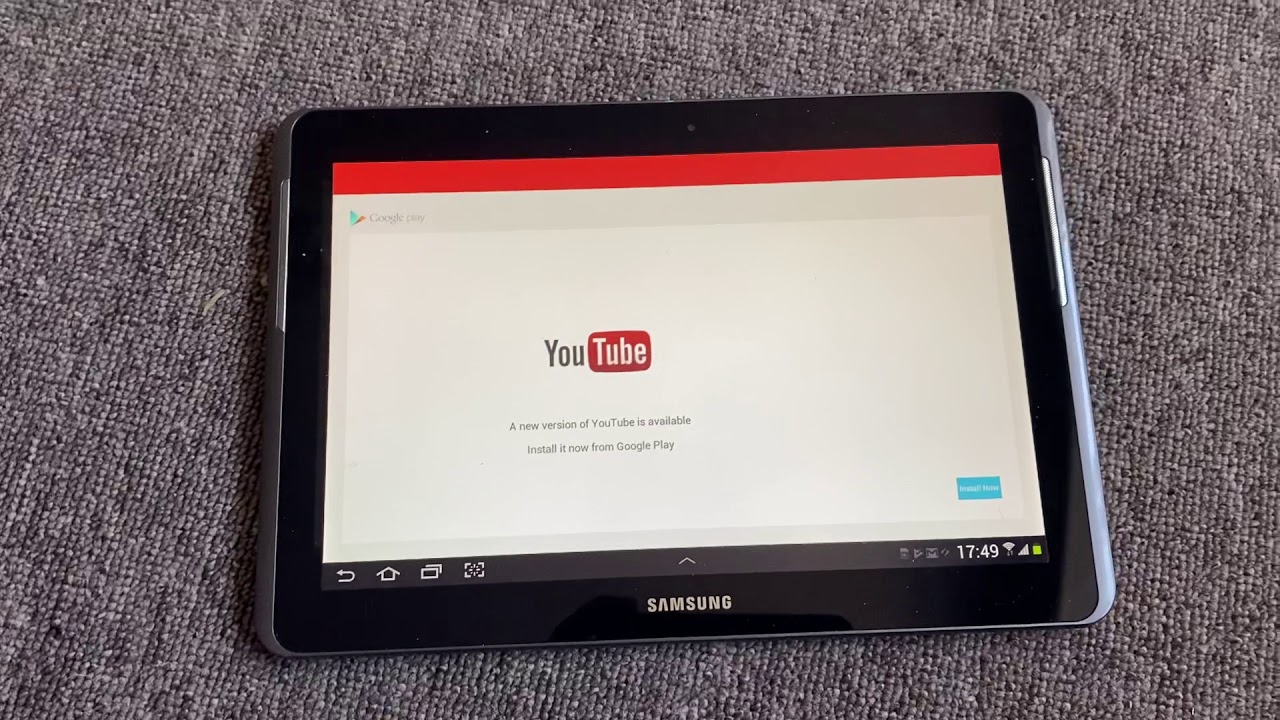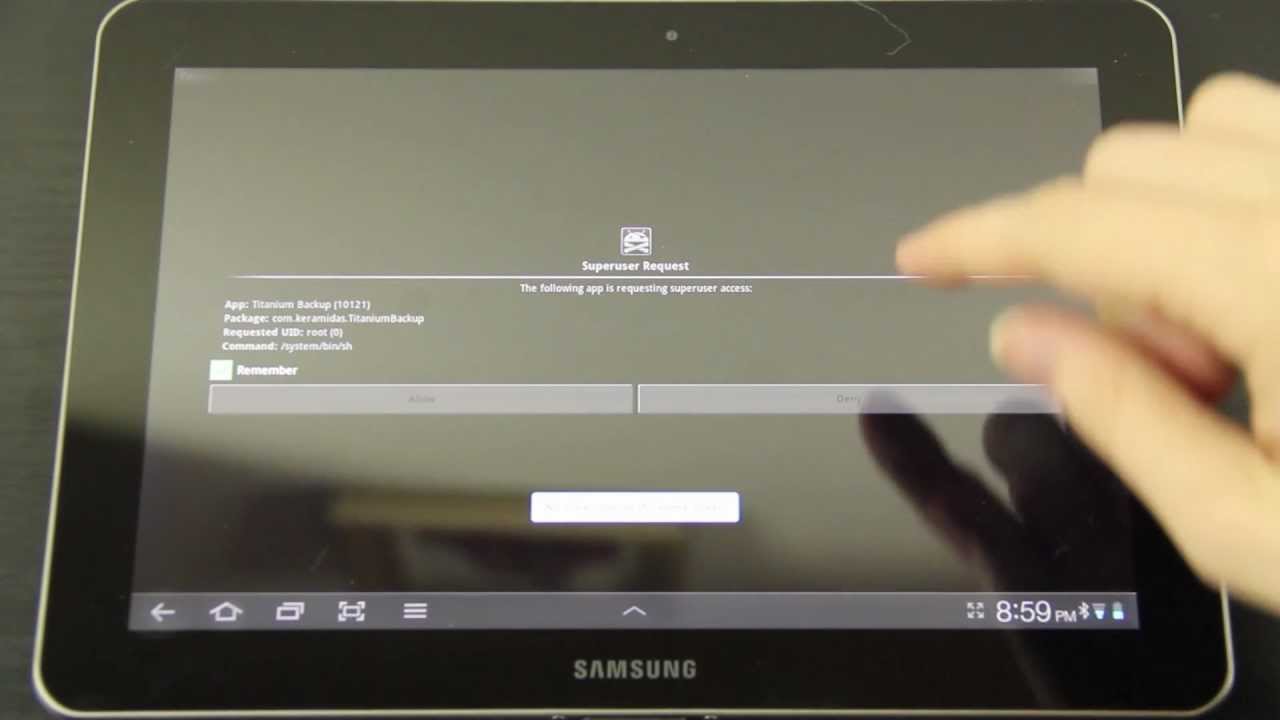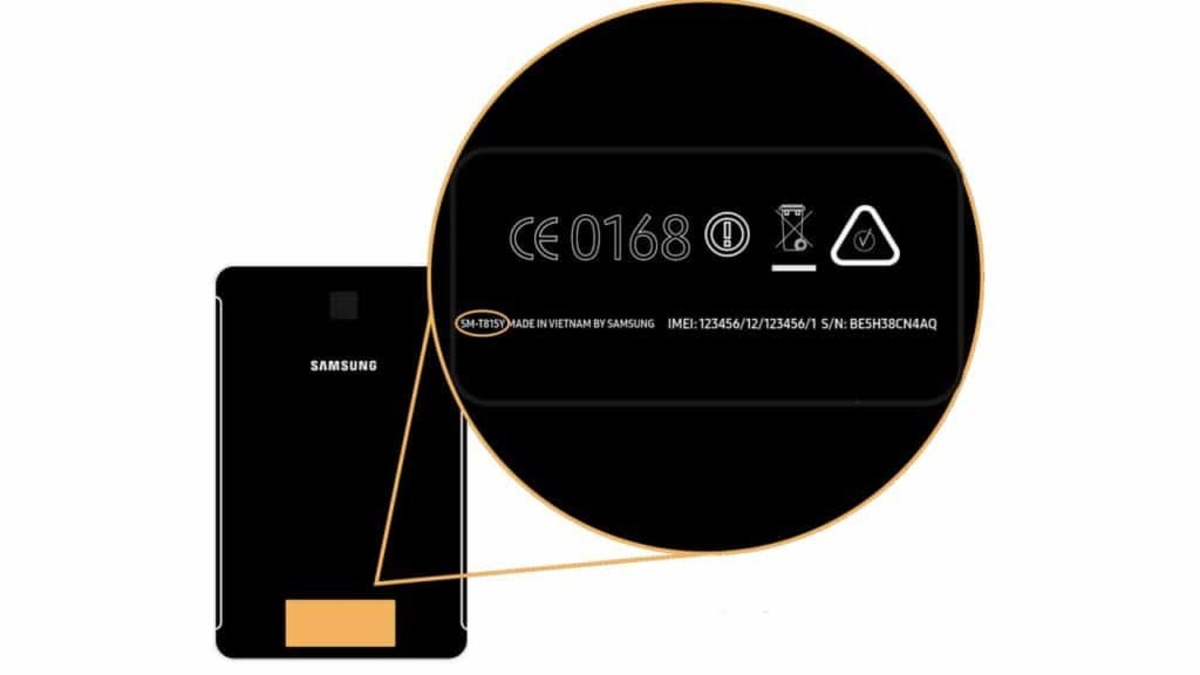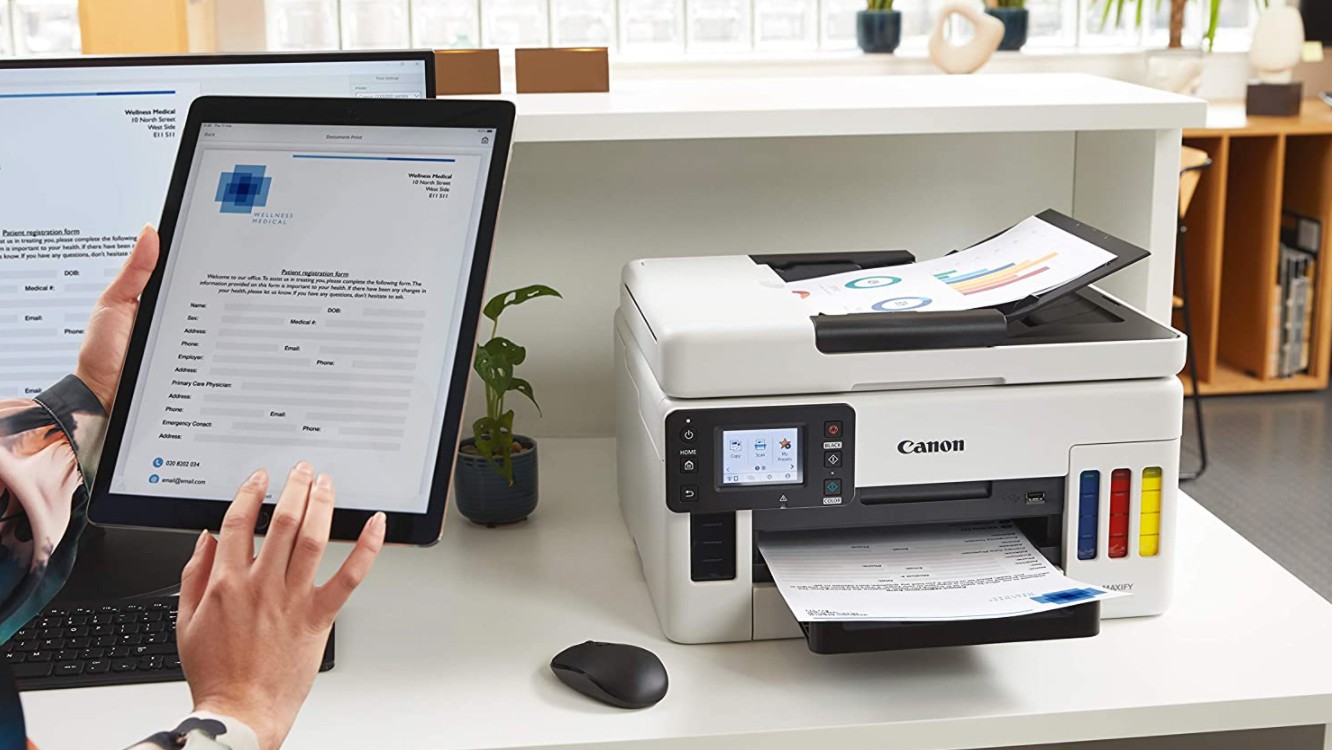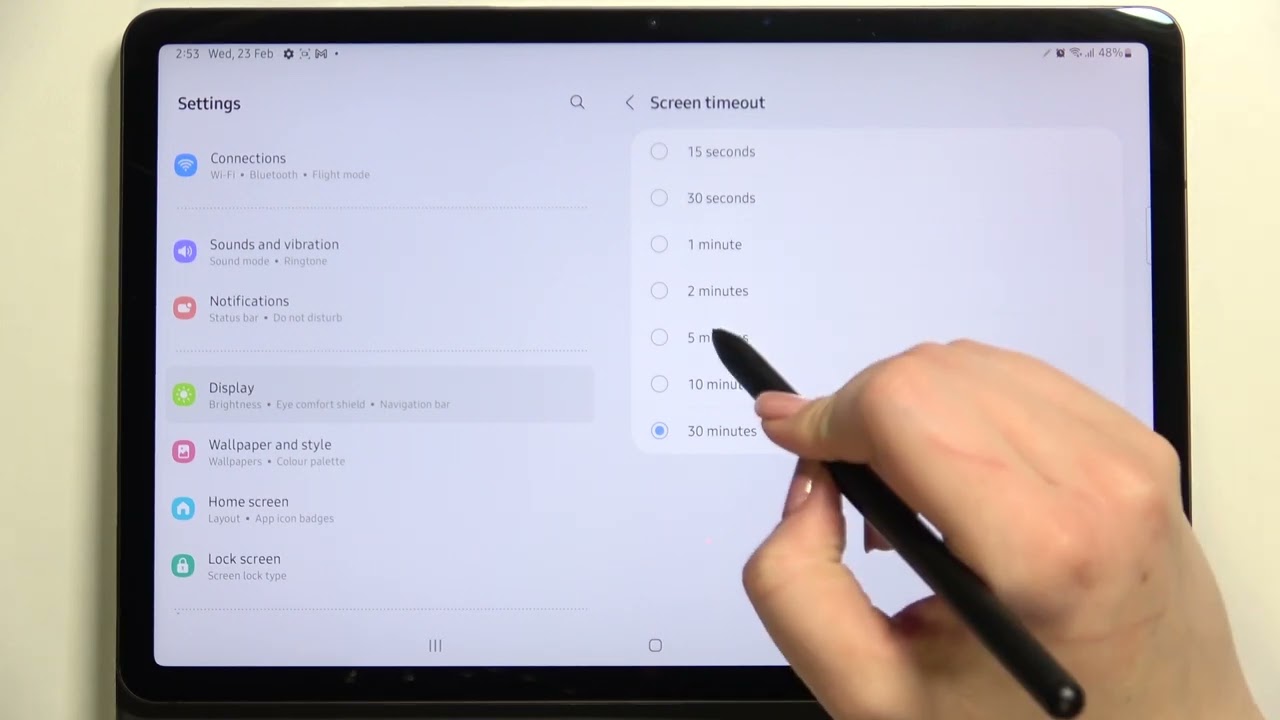Introduction
Opening a Samsung tablet may seem like a daunting task, but with the right tools and a step-by-step approach, you can safely access the internal components for repairs or upgrades. Whether you need to replace a faulty battery, upgrade the storage, or fix a broken screen, knowing how to open your Samsung tablet is essential.
Before you begin, it’s important to note that opening your tablet may void the warranty. If your tablet is still under warranty, it’s recommended to contact Samsung or an authorized service center for assistance. However, if your tablet is out of warranty or you’re comfortable taking matters into your own hands, this guide will walk you through the necessary steps.
In this article, we will provide you with a comprehensive guide on opening a Samsung tablet. We’ll cover the tools you’ll need and take you through the step-by-step process of accessing the internal components. By following these instructions carefully, you’ll be able to safely open your tablet without causing any damage.
Please note that the exact steps may vary slightly depending on the model of your Samsung tablet. It’s important to consult the specific user manual or online resources for your tablet model to ensure you have the most accurate instructions.
So, if you’re ready to take on the challenge and open your Samsung tablet, let’s gather the necessary tools and dive into the step-by-step process!
Tools Required
Before you start disassembling your Samsung tablet, make sure you have the following tools on hand:
- Small Phillips-head screwdriver: This tool is essential for removing the screws that secure the back panel of your tablet.
- Pry tool or plastic spudger: You’ll need this tool to safely separate the front and back panels of your tablet without causing any damage.
- Tweezers: Tweezers can be handy for handling small components or connectors during the disassembly process.
- Anti-static wrist strap: While not absolutely necessary, using an anti-static wrist strap can help prevent static electricity discharge that could potentially damage sensitive internal components.
- Clean, flat surface: Having a clean and flat surface to work on will make it easier to keep track of small screws and other components as you disassemble your tablet.
It’s important to note that different tablet models may require additional or specific tools. Therefore, it’s always a good idea to consult the user manual or online resources for your tablet to ensure you have the right tools for the job.
Now that you have the necessary tools ready, you’re one step closer to opening your Samsung tablet. In the next section, we’ll walk you through the first step of powering off your tablet before proceeding with the disassembly process.
Step 1: Power Off the Tablet
The first step in opening your Samsung tablet is to power it off completely. This is necessary to ensure your safety and prevent any potential damage to the device. Follow these simple instructions:
- Press and hold the power button on your tablet until a menu appears on the screen.
- Select the “Power Off” or “Shutdown” option from the menu.
- Confirm the action when prompted.
- Wait for your tablet to power off completely. You may need to hold the power button for a few seconds until the screen goes completely dark.
Once your tablet is powered off, you can proceed to the next step of the disassembly process. It’s important to ensure that the tablet stays powered off throughout the entire procedure to avoid any potential electrical shock or damage to the internal components.
Now that you have successfully powered off your tablet, it’s time to move on to the next step and locate the back panel. This will allow you to access the internals of your Samsung tablet for repairs or upgrades.
Step 2: Locate the Back Panel
After powering off your Samsung tablet, the next step is to locate the back panel. The back panel is the part of the tablet that encloses the internal components and provides access for maintenance and repairs. Follow these instructions to locate the back panel:
- Place your tablet on a clean and flat surface with the screen facing down.
- Take a moment to examine the edges of your tablet. You’ll be looking for any visible screws or notches that indicate the location of the back panel.
- If you see screws, use a small Phillips-head screwdriver to remove them. Place the screws in a safe location to avoid losing them.
- If there are no visible screws, look for small notches or indentations along the edges of your tablet. These notches are designed for prying tools or plastic spudgers.
Once you have located the screws or notches, you’re ready to move on to the next step of the disassembly process. Remember to handle your tablet with care and apply gentle pressure when using tools to avoid scratching or damaging the surface.
With the back panel located, you’re one step closer to accessing the internal components of your Samsung tablet. In the next section, we’ll guide you through the process of removing the screws to detach the back panel and progress further with the disassembly process.
Step 3: Remove the Screws
With the back panel located, the next step is to remove the screws that hold it in place. These screws secure the back panel to the frame of your Samsung tablet. Follow these instructions to remove the screws:
- Using a small Phillips-head screwdriver, carefully unscrew each visible screw on the back panel of your tablet.
- Place the screws in a safe container or on a clean surface to prevent loss.
- If your tablet has any hidden screws, refer to the user manual or online resources for your specific tablet model to identify their locations. Hidden screws are often covered by stickers or removable components.
- Once all the screws are removed, set the screwdriver aside and prepare to proceed to the next step.
It’s crucial to keep track of the screws and their placements to ensure you can reassemble your tablet correctly later on. You may consider using a magnetic mat or creating a diagram to map out the screw positions if needed.
With the screws removed, you’re one step closer to accessing the internal components of your Samsung tablet. In the next section, we’ll guide you through the process of using a pry tool or plastic spudger to separate the front and back panels without causing any damage.
Step 4: Use a Pry Tool to Separate the Front and Back Panels
After removing the screws, it’s time to separate the front and back panels of your Samsung tablet. To accomplish this, you’ll need a pry tool or a plastic spudger. This tool will allow you to carefully pry open the tablet without causing any damage. Follow these instructions to separate the panels:
- Find a notch or indentation along the edge of the tablet where you can insert the pry tool or plastic spudger.
- Insert the tool into the notch, applying gentle pressure to begin separating the front and back panels.
- As you work your way around the edges of the tablet, carefully slide the tool along the perimeter to loosen the clips that hold the panels together.
- Avoid applying excessive force or using sharp objects, as this can damage the components or the casing of your tablet.
- Continue this process until the front and back panels are completely separated.
- If you encounter any resistance or difficulty, double-check for any hidden screws or clips holding the panels together. Refer to the user manual or online resources for your tablet model for additional guidance.
Once the front and back panels are separated, proceed to the next step to safely disconnect the battery. This step is crucial to prevent any accidental power flow during the disassembly process.
With the front and back panels separated, you’re making progress in accessing the internal components of your Samsung tablet. In the next section, we’ll guide you through the process of disconnecting the battery for safe disassembly.
Step 5: Disconnect the Battery
After successfully separating the front and back panels of your Samsung tablet, it’s crucial to disconnect the battery before proceeding further. This step ensures your safety and prevents any accidental power flow during the disassembly process. Follow these instructions to disconnect the battery:
- Locate the battery connector on the motherboard of your tablet. It is a small connector attached to the battery by wires.
- Gently lift the connector tab using your fingers or a pair of tweezers to loosen it.
- Once the connector tab is released, carefully pull the connector away from the motherboard to disconnect the battery.
- Ensure that the connector is fully detached to prevent any power flow to the tablet’s internal components.
Disconnecting the battery is a crucial step to avoid any potential electrical shock or damage to the tablet’s components. Double-check that the battery is fully disconnected before proceeding to the next steps.
Now that the battery is safely disconnected, you can continue with the disassembly process. In the next section, we’ll guide you through removing the panel holding the motherboard, allowing for further access to the internal components of your Samsung tablet.
Step 6: Remove the Panel Holding the Motherboard
Once the battery is disconnected, it’s time to remove the panel that holds the motherboard of your Samsung tablet. This panel provides access to the internal components and allows for repairs or upgrades. Follow these instructions to remove the panel:
- Inspect the interior of your tablet and locate the panel that covers the motherboard. It is usually secured with screws or clips.
- Using a small Phillips-head screwdriver, remove the screws that are holding the panel in place. Set the screws aside in a safe location.
- If the panel is secured with clips, gently pry the panel away from the tablet using a pry tool or plastic spudger. Take care not to apply excessive force to avoid damaging the components or the casing.
- Slowly lift the panel to expose the motherboard and other internal components. Be cautious and handle the panel with care to prevent any accidental damage.
With the panel removed, you now have access to the motherboard and other components of your Samsung tablet. Take a moment to familiarize yourself with the layout and connections before proceeding further with any repairs or upgrades.
Now that you’ve successfully removed the panel holding the motherboard, you’re closer to your goal of accessing and working on the internal components of your Samsung tablet. In the next section, we’ll guide you through the process of disconnecting the motherboard to further facilitate repairs or upgrades.
Step 7: Disconnect the Motherboard
Now that you have access to the motherboard of your Samsung tablet, the next step is to disconnect it. Disconnecting the motherboard allows you to safely handle and replace components as needed. Follow these instructions to disconnect the motherboard:
- Identify the connectors and cables attached to the motherboard. These may include ribbon cables, antenna cables, and other connectors.
- Gently and carefully disconnect each cable or connector from its corresponding port on the motherboard. To do this, use your fingers or a pair of tweezers to release the connector tabs or gently pull the cable away.
- Take note of the locations and orientations of the connectors to ensure proper reassembly later on.
- Once all the cables and connectors are detached, you can lift the motherboard away from the tablet chassis.
Handling the motherboard with care is crucial to avoid any damage to the delicate components. Make sure to hold it by the edges and avoid touching any exposed circuitry or sensitive areas.
With the motherboard safely disconnected, you can now proceed to access and replace the specific components or perform any necessary repairs or upgrades. Take this opportunity to inspect the motherboard and other internal components for any signs of damage or wear.
In the following section, we’ll guide you through the process of accessing and replacing specific components in your Samsung tablet.
Step 8: Access and Replace Components as Needed
With the motherboard disconnected, you now have the opportunity to access and replace specific components within your Samsung tablet. Whether you need to replace a faulty battery, upgrade the storage, or fix a broken screen, this step allows you to address the specific issues you may be facing. Follow these instructions to access and replace components:
- Identify the component you need to replace or work on, such as the battery, storage drive, or screen.
- Refer to the specific user manual or online resources for your tablet model to find detailed instructions on accessing and replacing the specific component.
- Follow the provided instructions carefully and make sure to handle the components with care, especially if they are delicate or sensitive.
- If you encounter any difficulties or are unsure about the procedure, it’s recommended to seek the assistance of a professional or refer the device to an authorized service center.
- Once you have replaced or repaired the necessary components, carefully reassemble the tablet following the reverse steps of the disassembly process. Make sure all cables and connectors are properly reattached.
Remember to take your time and exercise patience throughout the process. Rushing or skipping steps can lead to mistakes or further damage to your tablet.
After successfully accessing and replacing the components as needed, you can proceed to the next and final step: reassembling your Samsung tablet.
In the next section, we’ll guide you through the process of reassembling your tablet, ensuring all components are secured properly for optimal functionality.
Step 9: Reassemble the Tablet
After completing the necessary repairs or upgrades to your Samsung tablet, it’s time to reassemble the device. Reassembling the tablet involves carefully putting the components back together, securing them in place, and ensuring everything is properly connected. Follow these instructions to reassemble your tablet:
- Start by carefully placing the motherboard back into the tablet chassis, aligning it properly with the screw holes and connectors.
- Reconnect all the cables and connectors to their respective ports on the motherboard. Ensure they are firmly seated and properly oriented.
- If there were any screws that secured the motherboard or other components, insert them back into their original positions and tighten them gently.
- If there are any additional components or parts that were removed during the disassembly process, make sure to reattach them as instructed.
- Once all the components are in place, align the back panel with the tablet chassis and carefully press it down to snap it back into position.
- If there were screws holding the back panel, insert and tighten them securely using a small Phillips-head screwdriver.
During the reassembly process, it’s important to be gentle and make sure everything fits together properly. Avoid applying excessive force or overtightening screws, as this can cause damage to the components or the casing of your tablet.
Once you have reassembled the tablet, double-check that all the components are securely in place. Take a moment to inspect the device for any loose parts or cables that may need additional attention.
With your Samsung tablet successfully reassembled, you can now power it on and enjoy the benefits of the repairs or upgrades you have made.
Congratulations on successfully opening and reassembling your Samsung tablet! With the right tools and careful attention, you were able to access and replace components as needed. Remember to test the functionality of your tablet to ensure everything is working correctly.
If you encounter any issues or difficulties during the process, it’s advisable to seek professional assistance or consult the user manual for your specific tablet model.
Conclusion
Opening a Samsung tablet may initially seem like a complex task, but with the right tools, instructions, and a careful approach, it’s possible to safely access the internal components for repairs or upgrades. Throughout this guide, we have provided detailed steps on how to open a Samsung tablet, including locating the back panel, removing screws, separating the front and back panels, disconnecting the battery, removing the panel holding the motherboard, disconnecting the motherboard, accessing and replacing components, and reassembling the tablet.
It’s essential to approach the disassembly process with caution, ensuring that the tablet is powered off and using the appropriate tools to avoid damaging the components or the casing. Following the step-by-step instructions and consulting the user manual or online resources specific to your tablet model will help ensure a successful and safe process.
However, it’s important to note that opening your tablet may void the warranty. If your tablet is still under warranty, it’s recommended to contact Samsung or an authorized service center for assistance instead. Additionally, if you are unsure or uncomfortable performing the disassembly yourself, seeking professional help is always a viable option.
By opening your Samsung tablet, you gain the ability to replace faulty components, upgrade storage or other hardware, and potentially extend the lifespan and performance of your device. Just remember to exercise patience, pay attention to details, and handle the components with care.
We hope this guide has provided you with the necessary knowledge and confidence to open your Samsung tablet. Remember to follow the instructions closely, consult the appropriate resources, and take your time throughout the process. With careful execution, you’ll be able to successfully perform repairs or upgrades on your tablet and get it back to its optimal functionality.
Good luck with your tablet-opening journey, and enjoy the fruits of your efforts! If you have any further questions or need additional assistance, don’t hesitate to seek further guidance from professionals or reach out to the Samsung support team.







